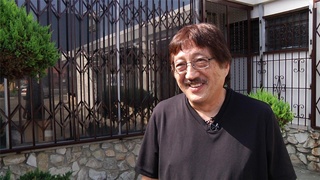Interviews
Main differences between Japanese and Japanese Americans
I guess my underlying feeling there is that Japanese Americans have been taught and actively pursued not being Japanese. Whereas Japanese know they’re Japanese and are very comfortable being Japanese. They may not be comfortable being anything else.
And in that way, maybe being Japanese American is better because—or not better, but it’s different. There’s an advantage there because Japanese Americans, I believe, have been so active in trying to be other people that they’re not Japanese—trying to be white Americans or just assimilate into whatever culture that they’re in. And I guess that helped me out, that assimilation and that ability to kind of melt in. Maybe I can never take a principle role in a group or something, but I can blend in, and I can function very, very well.
So maybe that’s an advantage. I guess the difference there is that one’s trying not to be what they really are. The other one is just what they are. That’s it.
Date: September 12, 2003
Location: Tokyo, Japan
Interviewer: Art Nomura
Contributed by: Art Nomura, Finding Home.
Explore More Videos







Postwar school-life
(b. 1930) Half Japanese and grew up in both Japan and the United States.

On Challenging Institutions
(1938-2020) Japanese American attorney and civil rights activist

Pop and Balls
(1938-2020) Japanese American attorney and civil rights activist

Re-examining Identity
(1941-2018) Japanese Canadian photojournalist and activist



Conflicted about immigrating to America (Japanese)
(b. 1925) War bride

Defining "Nikkei"
(1941-2018) Japanese Canadian photojournalist and activist

Unique Identity from Having Multiple Backgrounds
(b. 1938) Philipines-born hikiagesha who later migrated to the United States.
